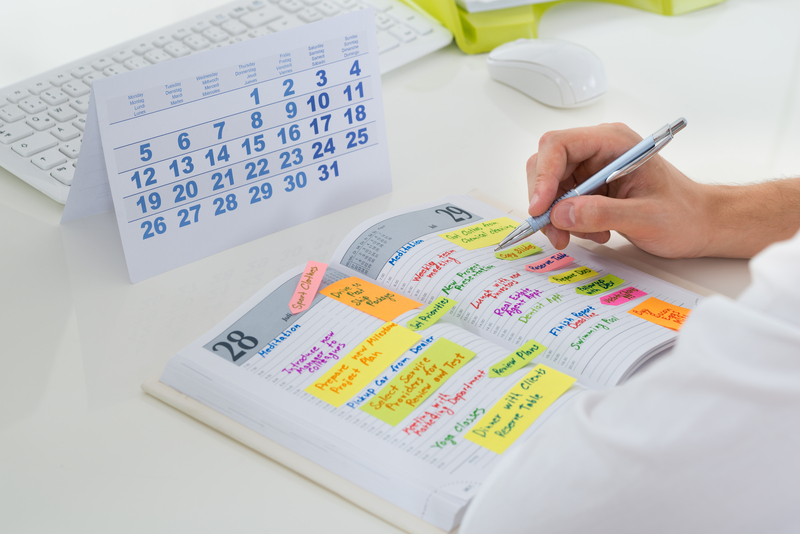How to Wrap and Protect Your Mattress for Transport: A Comprehensive Guide
When you're moving to a new home, properly wrapping and protecting your mattress for transport is essential. Mattresses are expensive and delicate, and without the right techniques, they can become stained, torn, or infested with dust mites during the move. In this informative article, you'll learn step-by-step instructions on how to wrap and protect your mattress for a move, along with expert tips and essential supplies for ultimate peace of mind. Whether you're hiring movers or transporting it yourself, these actionable tips will help guarantee your mattress remains clean and undamaged.

Why Properly Wrapping and Protecting Your Mattress Matters
Before diving into the practicalities, let's discuss why it's crucial to wrap and protect your mattress for transport. Mattresses can easily absorb odors, moisture, dust, and dirt. Unsuitable handling or transportation can also cause:
- Permanent stains from water or spills
- Rips and tears in the mattress fabric
- Pest infestations (e.g., bed bugs)
- Sagging or loss of structure from being bent or compressed
- Exposure to allergens like pollen or pet dander
Essential Supplies for Wrapping and Protecting Your Mattress
Gather These Materials Before You Start:
- Mattress Bag: A heavy-duty, waterproof plastic mattress bag. Available in sizes for twin, full, queen, and king mattresses.
- Protective Blankets: Optional but helpful for added cushioning, especially during long-distance moves.
- Packing Tape: Wide, strong packing tape or duct tape to seal the mattress bag thoroughly.
- Bungee Cords or Straps: For securing the mattress inside the moving truck to prevent it from shifting.
- Scissors or Box Cutter: For opening and sealing the bags and tape cleanly.
- Permanent Marker: To label the mattress bag, especially if you're moving multiple mattresses.
- Gloves: To protect your hands, especially if handling larger mattresses.
You can find mattress bags at most hardware stores, moving supply outlets, or online. Never use thin plastic sheeting meant for painting or gardening, as it tears easily--always opt for products specifically designed for mattress protection.
Step-By-Step: How to Wrap Your Mattress for Moving
1. Clear and Prepare the Mattress
- Remove all bedding: Strip the mattress of sheets, pads, protectors, and pillows. Launder these separately.
- Ensure the mattress is completely dry: Never wrap a damp mattress, as this can lead to mold or mildew growth during transit.
- Vacuum the surface: Use a clean vacuum with an upholstery attachment to remove dust, hair, and crumbs.
- Spot-clean stains: If you spot any stains, gently clean and allow the area to fully dry before proceeding.
2. Insert the Mattress into a Protective Bag
Some mattress bags have an extra-wide opening or even a zipper closure for easier insertion. Here's how to fit your mattress into the bag for full coverage:
- Place the bag flat on the floor and open it wide.
- With help: Have a friend hold the bag open while you gently lift the mattress and slide it inside.
- Without help: Stand the mattress upright and slide the bag over it from top to bottom, carefully pulling the plastic downward.
- Double-check that all corners and edges are inside the bag.
For memory foam and latex mattresses, be extra gentle. Never bend, fold, or compress the mattress more than necessary, as this can damage its internal structure.
3. Seal the Mattress Bag Securely
- Once the mattress is completely bagged, seal the open end tightly with packing tape.
- Apply several layers of tape, running it along the seam, then fold any excess plastic and tape it smoothly against the mattress for a snug fit.
- Check for air holes or gaps and patch them with extra tape to ensure a watertight seal.
- Pro tip: Label the outside of the bag with a marker so movers can quickly identify which room it belongs in.
4. Add Extra Padding (Optional But Recommended)
For high-value or memory foam mattresses, wrapping them in soft moving blankets before inserting them in the bag or after bagging them and securing with tape offers extra shock protection.
- Lay the moving blankets flat, wrap around the bagged mattress, and tape in place.
- This helps protect against sharp impacts, accidental drops, or contact with other furniture.
How to Transport Your Mattress Safely
Lifting and Loading the Mattress
- Get help: Mattresses are awkward and heavy; always use two people.
- Protect doorways and walls: Use corner guards or padding as you maneuver the mattress through tight spaces.
- Avoid folding: Most innerspring mattresses should be kept flat or upright, but never folded. Memory foam and latex can sometimes be slightly bent but check manufacturer guidelines first.
Placing the Mattress in the Moving Vehicle
- If possible, transport the mattress upright on its side. This saves space and is less likely to warp the internal structure.
- If it must lie flat, ensure no heavy objects are placed on top or leaning against it.
- Strap it securely: Use bungee cords, straps, or moving ropes to secure the mattress to the vehicle wall or floor anchors.
- For pickup trucks or open trailers, always ensure the mattress bag is sealed and use a weatherproof tarp tied down tightly to prevent wind exposure.
Transporting Mattresses in Bad Weather
Never transport an unprotected mattress in the rain or snow. Moisture exposure can cause irreversible damage. If moving on a stormy day is unavoidable, double-bag your mattress and cover it with a heavy-duty tarp, checking frequently for tears or leaks during the journey.
Special Considerations for Different Mattress Types
How to Wrap and Protect a Memory Foam Mattress
- Never fold in half: This can break down foam cells, causing lumps or valleys.
- Use a thick mattress bag and padded blankets for shock absorption.
- Keep upright and avoid stacking heavy items on top during the move.
How to Wrap and Transport Spring Mattresses
- Transport upright whenever possible.
- Ensure the mattress stays flat and supported to prevent misaligned springs.
- Wrap corners with extra padding to avoid punctures.
How to Wrap Hybrid or Latex Mattresses for Moving
- Use high-quality, tear-resistant plastic bags.
- Make sure all air is pushed out before sealing to reduce bulk.
Unwrapping and Setting Up Your Mattress After Transport
- Inspect the bag for any tears, dirt, or signs of moisture before bringing the mattress inside.
- Lay out a clean sheet or tarp; cut away the protective bag with care to avoid accidentally slicing the mattress fabric.
- Check your mattress for any unusual odors or stains.
- Allow the mattress to "air out" for at least a few hours before putting on fresh bedding. This gives it time to decompress and recover from being wrapped.
If you notice any serious damage, contact your moving company or insurance provider immediately.
Expert Tips for Maximum Mattress Protection During Transport
- Always use a mattress bag, not just blankets or shrink wrap: Plastic seals out moisture, dust, and bugs better than fabric alone.
- Don't overload your moving truck: Give your mattress space to avoid compressing it under other items.
- Tape all seams and edges: Mattresses regularly get caught on nails, splinters, or metal in moving trucks--extra tape prevents rips.
- Keep away from sharp edges or dirty floors: Place your mattress on top of boxes or other soft goods rather than directly on the truck bed.
- If storing for an extended period: Store mattresses flat (not on the side), and always in a climate-controlled environment inside the bag.

Frequently Asked Questions About Wrapping and Transporting Mattresses
Do I need to wrap my mattress if I'm only moving it a short distance?
Yes. Even for a local move or a quick ride in a clean vehicle, wrapping your mattress helps prevent it from attracting dirt, moisture, or pests along the way.
Can I use stretch wrap or moving blankets alone?
Stretch wrap and moving blankets are great for added protection but should not replace a mattress bag, as they are not airtight or waterproof.
What should I do if my mattress gets wet during transit?
Unwrap and dry it as soon as possible in a well-ventilated area. Stand it upright and use fans or a dehumidifier. If it stays wet for more than a few hours, it may develop mold, requiring professional cleaning or replacement.
Can I fold or roll memory foam or hybrid mattresses for moving?
Some foam mattresses are designed to be compressed, but unless the manufacturer packaging or instructions specify, it's best to avoid folding or rolling to prevent structural damage.
Conclusion: Protect Your Investment and Sleep Comfortably
Whether you're moving across the city or across the country, learning how to wrap and protect your mattress for transport is critical. Using the right materials and methods will ensure your mattress stays clean, dry, and intact for years of comfortable sleep. To recap:
- Invest in a sturdy, waterproof mattress bag the right size for your bed.
- Seal all openings with heavy-duty tape to prevent moisture and dirt ingress.
- Transport upright and secured to avoid unnecessary strain or damage.
- Let your mattress air out at your new home before using it for the best sleeping experience.
By following these mattress wrapping and protection tips, you'll make sure your sleep investment arrives in perfect shape. Happy moving!
```


